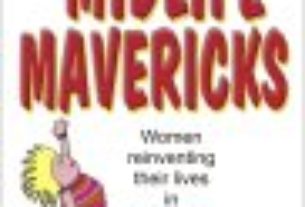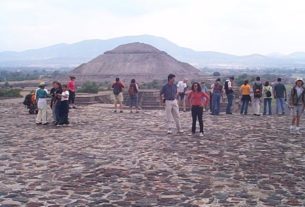A Mexico book by Tony Cohan
As novelist and travel writer Tony Cohan says in his narrative about San Miguel de Allende: “My editor wanted me to write about life here in the region where we live. At that time, San Miguel de Allende, Guanajuato and Querétero ranked a page or two each in the guide books, day stops or overnighters on a tour of the ‘silver cities,’ the subject of an occasional tourist piece in a Sunday travel section, the ‘charming little town hidden away in the Mexican mountains.’ Don’t put a gloss on it, the editor said. Tell what life is really like, the good and the bad. Tell the truth a good fiction writer knows.”
That’s essentially what Cohan has done here in this attractive narrative about the fifteen years he and his artist wife, Masako, have spent in San Miguel.
Here’s Cohan describing their dissatisfaction with life in Los Angeles and the decision to take a look at Mexico, fifteen years ago: “At dinners I listened politely to friends’ conversations about the price of real estate, projects in development, notable recent crimes. After a cultural night out I lay in bed reviewing the drive there and back, the parking experience, where I put my keys – the event itself barely recalled. I left messages on machines; they were returned in kind. Surrounded by art, music, information and food, I saw, heard, thought or tasted little. A series of robberies and killings erupted in our neighborhood: first the Bob’s Big Boy murders, in which the victims were executed; then a robbery at a favorite restaurant two blocks away, the customers mugged and herded into a freezer; then a break-in at the house next door.” And so on…. So when Masako found a glowing Gourmet magazine article on an attractive looking Mexican mountain village called San Miguel, complete with glorious color spreads the couple decided to check it out.
The result is 250 pages of exploration of the town, the area, and particularly the Mexican people. It’s a book that is very much on a par with Frances Mayes’ Under the Tuscan Sun.
It would appear that the San Miguel area hadn’t been discovered by large numbers of American and Canadian retirees back in 1985, when the couple made their first exploratory visit. Cohen makes the comment early on that gringos comprised only two per cent of the population. However, at the end of his narrative – fifteen years later – he says: “Last week I went to a party where there were more gringos than there used to be in the entire town.”
The couple have remained – spending several months of each year there – since 1985, first staying in the Ambos Mundos hotel and finally deciding to sell their home in California. Eventually, however they bought an old house, an experience which takes up a good chunk of the story. The house they started with is described thus: “…ravaged walls, floor rot, broken panes of glass, strands of electrical wire hanging loose like Christmas decorations. It’s like coming upon the ruined hull of a once-great ship.” It would appear from the narrative that that’s still their address.
I should point out, however, that if you’re looking for a ‘bricks and mortar’ account of house restoration, you won’t find it here. It’s not Cohan’s style. Rather, he has a philosophical approach to all of the work that obviously had to be done and which must have gone on for some considerable time. “Each week we work in the house a little less, live in it a little more. We try to remember we have time: that time is in fact the whole idea. We war with gringo compulsions to fall ‘under the lash of completion….’ We bought the house not to renovate it but to live in it: an end in itself, a site of pleasure and revelation. We have no plans to sell it. It’s paid for in full. Let’s grow into the place, let it speak to us…..”
There actually aren’t a lot of gringos in this book. Most of Cohan’s acquaintances seem to be Mexicans. He obviously enjoys their company and has some interesting observations to make about them.
“Mexicans tend to present a serious demeanor until the least zone of safety is established: then laughter, wit and jokes pour forth. This beguiling blend of wit and dignity makes them generally nice to be around. People who dance with skeletons and skulls, have a Day of the Locos, endure an abysmal government with scornful laughter, are dark absurdists.”
He also makes an interesting observation that, as a rule, Mexicans don’t care for views. Rooftops are for dogs and refuse. And gringos, too, I might add. In Ajijic, where we live, the gringos place high value on a good view, and there are some very good ones. But Mexicans seem to prefer walls and enclosures, which becomes quite obvious when you stroll around this Lakeshore area.
If I’ve quoted a lot from this book it’s because I find Cohan a quotable writer. I also enjoyed his upbeat approach to life.
In my humble O: If you have any interest at all in Mexico, this is one you should read.
 On Mexican Time: A New Life in San Miguel
On Mexican Time: A New Life in San Miguel
By Tony Cohan
Broadway Books 1999
Available from Amazon Books: Paperback and Hardcover


